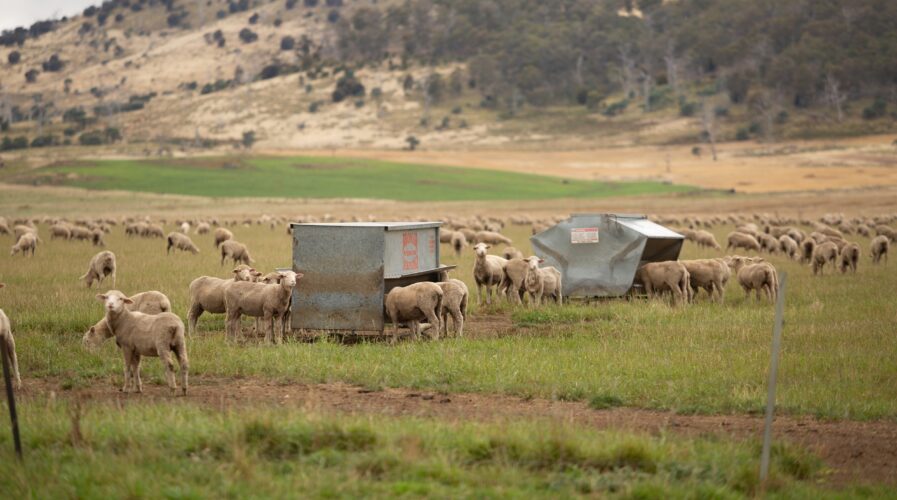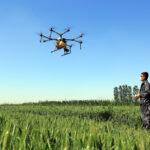
(Source – Shutterstock)
Satellite-connected, solar-powered water pump enhancing pastoral farming in Australia
In Australia, the agriculture industry contributes a lot to the economy in agritech is becoming increasingly important in helping farmers make the most they can in the industry. From using machines for harvesting to relying on AI for predictive analysis of the weather, the agriculture industry continues to witness innovations through technology.
According to the Australian Bureau of Statistics, the gross value of Australian agriculture increased 17% to AUD$71 billion in 2020-21. The improved growing conditions drove the gross value of broadacre crops to AUD$23 billion (up 79%) while the gross value of livestock disposals and livestock products decreased 5% to AUD$31 billion.
When it comes to livestock and pastoral farming, there are still some areas in which farmers are hoping technology can help them improve. A major pain point for Australia’s 34,000 livestock farmers is spending a lot of time in manual labor to check food and water for their livestock. At the same time, with six job vacancies for every agriculture graduate, the farming industry is facing a widespread shortage of workers, and there isn’t always someone available for those chores. In addition, agriculture irrigation water use is expected to increase in the long-term due to climate factors.
But things may be changing in pastoral farming. Myriota, the world leader in secure, low-power satellite connectivity for the Internet of Things (IoT), and Grundfos, the global leader in advanced pump solutions and water technology are launching an innovative range of satellite-connected, solar-powered water pumps for livestock farming.
In developing this simple, “works anywhere you can see the sky” solution, Grundfos hopes to enable easy remote monitoring of water pumps and tanks, thereby significantly decreasing the time, fuel, and labor necessary to regularly and manually check each water point.
Currently, each animal needs on average 50 liters of drinking water per day. The amount is higher during summer, especially for pastoral farming. As such, pumping and tank systems need to be reliable and efficient. Using satellite-connected sensors attached to Grundfos’ solar-powered water pumps and any existing tank, farmers will have a 24/7 water pump and tanks’ monitoring system in their pocket.
Using the Grundfos Solar Connect mobile app, farmers can track water levels in storage tanks. It delivers real-time, useful data on water pumps’ status, and alerts farmers when supply is low or maintenance is required. With 12 updates daily on only two AA batteries the sensors’ life expectancy is two years, making the whole technology low maintenance and easy to install and use. With a daily update, Myriota-enabled applications can see 7+ years of battery life.

“Introducing satellite connectivity to our range is a significant improvement for all farmers that spend a significant amount of time on pumps’ maintenance. Solar water pumps are already cost-effective, flexible, and reliable off-grid solutions using renewable energy, and this partnership further enhances the system, empowering users with essential data for their daily operations,” commented Sam Ryder, Area Managing Director WU (Water Utility) at Grundfos Australia.
Myriota is an Australian-headquartered company specializing in secure satellite connectivity for IoT, which is increasingly used across a range of industries and is especially useful where mobile or internet connectivity is either unavailable or unreliable. With a network of 20 small satellites orbiting the earth about 15 times a day, the most remote water pumps will have simple, reliable, and affordable connectivity and monitoring, anywhere.
The pastoral industry generates AUD$4.7 billion annually from livestock production in the Great Artesian Basin, with over 14 million beef cattle and 11 million sheep and lambs. The industry uses water delivery infrastructure worth more than AUD$3 billion, and extracts an estimated 187,000 megaliters/year from the Basin, making it the largest user in the region. Careful management of water resources is a strategic component of the industry, and smart technologies can help optimize this aspect.
For Myriota’s CEO, Ben Cade, satellite provides the potential to connect anything, anywhere – but at an unacceptably high cost and without the power footprint needed of battery only.
“Now, new space IoT communications are unlocking previously impossible or impractical use cases at a dramatically lower-cost running with near-zero maintenance thanks to low-power consumption. Having the opportunity to partner with world leaders in their industries such as Grundfos, and develop new solutions hand-in-hand with them is a validation of the value we bring to deliver tangibly better outcomes for our ecosystem, through simple, affordable access to data, anywhere,” explained Cade.
READ MORE
- The criticality of endpoint management in cybersecurity and operations
- Ethical AI: The renewed importance of safeguarding data and customer privacy in Generative AI applications
- How Japan balances AI-driven opportunities with cybersecurity needs
- Deploying SASE: Benchmarking your approach
- Insurance everywhere all at once: the digital transformation of the APAC insurance industry


